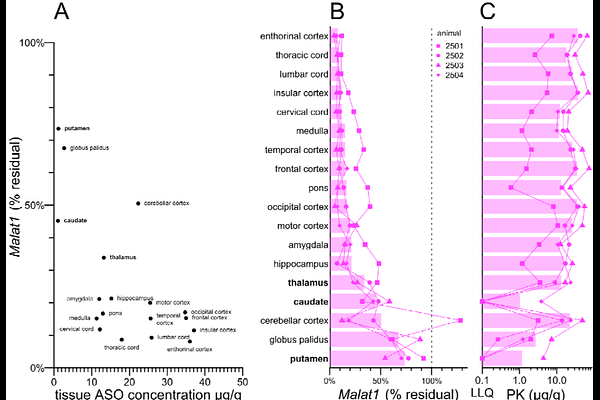Cell type distribution of intrathecal antisense oligonucleotide activity in deep brain regions of non-human primates

Cell type distribution of intrathecal antisense oligonucleotide activity in deep brain regions of non-human primates
Frei, J.; Gentile, J.; Lian, Y.; Mortberg, M. A.; Capitanio, J.; Jafar-nejad, P.; Vallabh, S. M.; Zhao, H. T.; Minikel, E. V.
AbstractIntrathecally administered RNase H1-active gapmer antisense oligonucleotides (ASOs) are promising therapeutics for brain diseases where lowering the expression of one target gene is expected to be therapeutically beneficial. Such ASOs are active, to varying degrees, across most or all cell types in the cortex and cerebellum of mouse and non-human primate (NHP), brain regions with substantial drug accumulation. Intrathecally delivered ASOs, however, exhibit a gradient of exposure across the brain, with more limited drug accumulation and weaker target engagement in deep brain regions of NHP. Here, we profiled the activity of a tool ASO against Malat1 in three deep brain regions of NHP: thalamus, caudate, and putamen. All neuronal subtypes exhibited knockdown similar to, or deeper than, the bulk tissue. Among non-neuronal cells, knockdown was deepest in microglia and weakest in endothelial stalk. Overall, we observed broad target engagement across all cell types detected, supporting the relevance of intrathecal ASOs to diseases with deep brain involvement.